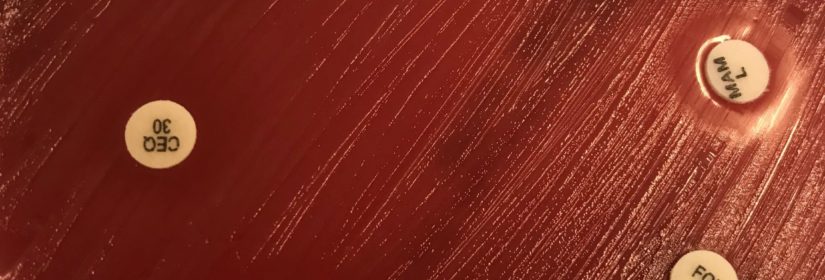No products in the basket.

Bacteriological testing uncovers some “unusual suspects”
Wet weather and a bit of increased stress on cows has led to an increase in the number of cases of mastitis recently. This has led to an increase in the number of milk samples we have been looking at over the same period. Usually, the bacteriological cause of mastitis at this time of year is one of the “usual suspects” ie. Staphylococci or Streptococci. In most cases the cow has picked up one of these “bugs” at milking time, ie. these types of mastitis are generally contagious, meaning they spread from cow to cow, usually on the milking operators’ hands at milking or through the milking machine. Recently however when milk samples have been cultured and analysed in the lab, we have seen some cases of bacteria which are not the “usual suspects”
One such case was a mastitis sample which contained a pure growth of a particularly nasty bug called Pseudomonas aeruginosa . Usually this organism is present in the environment and is not the main cause of mastitis on farms, however in some cases it can cause mastitis in its own right. In these cases, the bacteria can gain entry to the udder from the housing, but also through the use of contaminated water in the milking routine. I call this a particularly nasty bug because when it was tested to see which antibiotic tubes were effective against it, we found that it was resistant to all except one of the routinely used antibiotics.
Another interesting cause of bacteria recently was a yeast called Candida albicans. Again, yeasts are not a major cause of mastitis, but sometimes occur after a cow has been treated on several occasions with intramammary antibiotics. The reason being that yeasts are not killed by antibiotics (as was the case with this one when we tested it in the lab). Recently we have become more aware that there is a natural biome of “good” bacteria in the teat canal which helps defend the udder from infection. Over-use of antibiotics may interfere with these defence mechanisms, and allow the overgrowth of yeasts.
Bacteriological culture of mastitis samples is the only way to identify these “unusual suspects”, and treating these sorts of cases without knowing what’s going on can make matters worse. The lead up to drying off is a good time to discuss with your vet about some monitoring of high cell count cows, or problem cows to build up a profile of the bugs present on the farm.
The vet can then use this information to help inform the decision on which are the correct dry cow treatments to use on the farm. There is a growing move towards selective dry cow therapy, where some of the cows on the farm are infused with antibiotics at drying off if needed, while others are left untreated. Carrying out selective dry cow therapy on a farm without knowing the causes of clinical or subclinical mastitis can be very dangerous, as you can get a big flare up in the incidence of mastitis on the farm in the following season, particularly if there are highly infectious organisms such as Staphyloccus aureus present on the farm.
